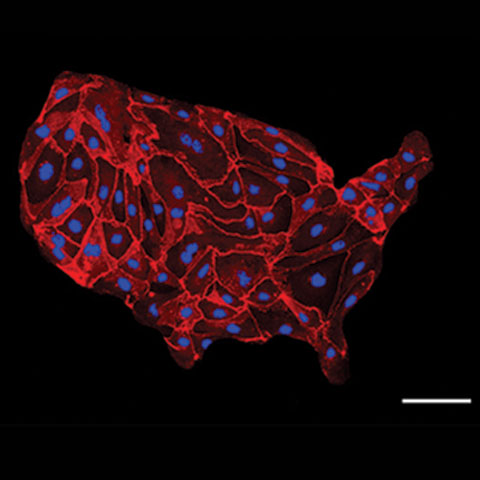American Cells

A layer of rat kangaroo epithelial cells grown on glass slides in a pattern resembling the continental United States.
Image Credit: Gary Wilk, Masatomo Iwasa, Patrick E. Fuller, Kristiana Kandere-Grzybowska, and Bartosz A. Grzybowski/PRL/APS
June 19, 2014
Our bodies contain trillions of cells that execute a variety of functions that keep us running. But they don't work alone; in fact, many cells form monolayers that work in concert to form critical barriers internally and externally.
Gary Wilk (Northwestern University) and his team behind the image above study these monolayers to better understand the unique properties that emerge when these cells work as a group. For instance, these researchers write that some monolayers' elastic modulus is "much higher than that characterizing individual cells" to better withstand external forces.
So why did they decide to grow cells in the shape of the United States? They wanted to test the hypothesis that confining the total cell layer to certain shapes might affect the size of individual cells within that shape.
Eventually they found that "confinement of the monolayer had no measurable effect on its cell-area distribution."
For more information, check out the team's paper published in Physical Review Letters.














